Lara Morrell is a contemporary art specialist and lens-based artist, as well as editor of My Art Guides, a curated publication on the most interesting exhibitions and events taking place during major international art gatherings, such as the Venice Biennale and Art Basel. Originally from London, she arrived in Venice in 2015 and settled on the Giudecca, where she has been living ever since, creating a close-knit community of people that have become her new family. In this interview, Lara tells us about her love for liminal spaces, her passion for traditional rowing and boating, and about the regenerating alternance of creative production and curatorial work.
INTERVIEW BY VALERIA NECCHIO
PHOTOS BY LARA MORRELL/ PORTRAITS BY VALERIA NECCHIO
Listen to Lara’s playlist x Gli Incurabili
VN: “I am interested in hearing the story of how and when you arrived in Venice. Was it intentional or casual?
LM: A bit of both. I was born and raised in London. Then, at 18, I left for India and spent a year or so there. There I met my ex who was from Turin. I was supposed to return to London to study at Goldsmiths but I always tend to follow my heart so, instead, I moved to Turin. I lived there for 4 years, studied photography at the IED and taught English to support myself through my studies. Then I moved to Lecce and lived there for three years cultivating pears during the day and furthering my artistic practice at night, I realised that I still had some ambition as an artist, so I applied for a masters at St Martins in London, and they took me on to do fine art photography. It went well, I was very focused on what I was doing and made sure I brought all my ideas to fruition, it paid off and was awarded for it.. But I knew that life in London was no longer for me, I had become too Italianised by then. In 2015, I came to Venice to see the Biennale and thought: “I could live here.”
VN: And you decided to give it a try.
LM: My practice at the time was underpinned by notions of liminality and the uncertain and fluid nature this threshold state entails. Venice felt very stimulating from that point of view.…From the movement of celestial bodies and their influence on the tides and the space between the land and the sea – Venice was a way of me being in one place whilst remaining adrift and in flux – rather than fixed, grounded or complete.
I started teaching English again (at all the local secondary schools – Vernier, Liceo Artistico e Classico, Vendramin Corner, Algarotti etc) and at the same time I started working regularly with a designer at Venini in Murano, exploring the world of glass, spending lots of time at the library at the Cini Foundation. I also worked as an international press officer with Elena and Francesca from Casadorofungher, which was a great insight into the workings of the Venetian artworld.
For the first Venice Glass week, I presented an installation called ATRAMENTAL – a series of glass buoys, filled with cuttlefish ink to represent different moon phases. During the course of the exhibition each glass buoy was moored to the exact measurement of the astronomical tide above sea level according to the lunar phase and day the buoy represents. There were many different layers to the project – the buoy was supposed to also allude to the shape of the womb (as well as the motif of a life preserver, a guarantor of being amidst the terror and the tyranny of the ocean), and as you walked into the room you would hear the sound of what the foetus hears from within the womb, a heart beat and a sound which resembles fluctuating tides. All my thoughts and feelings of the time – and those of living in Venice – were consolidated in this installation.
“My practice at the time was underpinned by notions of liminality and the uncertain and fluid nature this threshold state entails. Venice felt very stimulating from that point of view.”
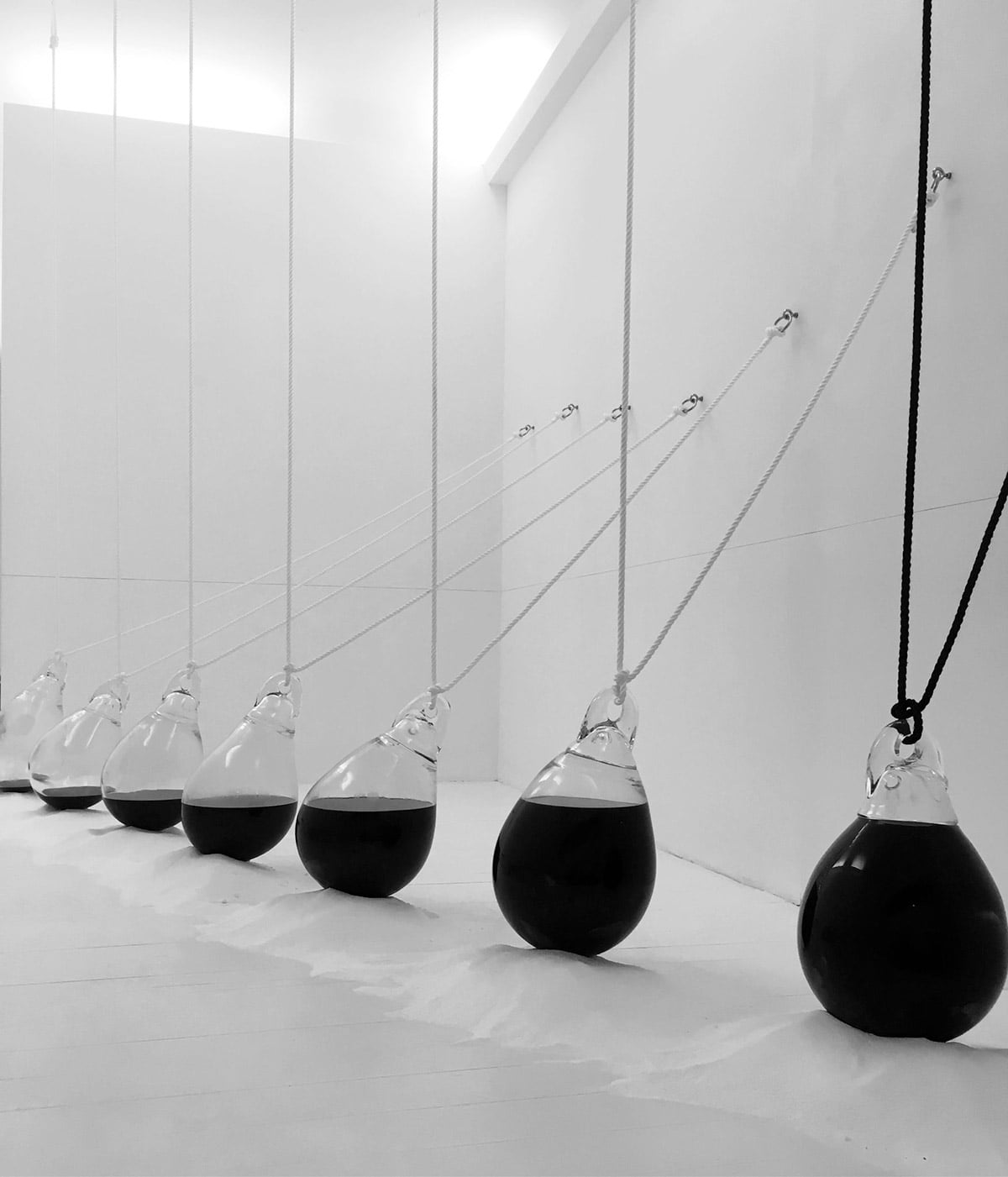
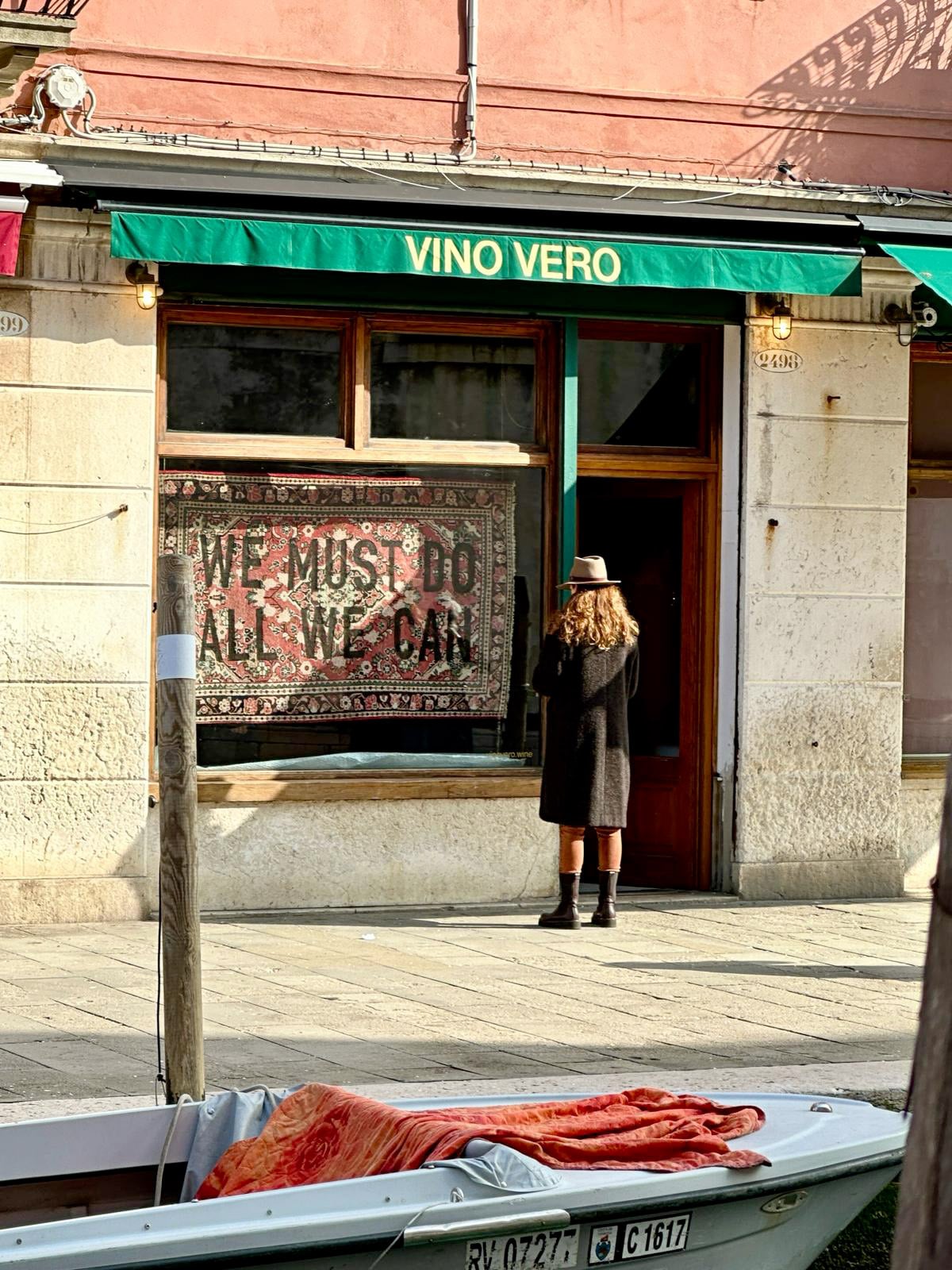
VN: How did you live the shift from creation to editing and working at The Art Guides?
LM: Being inundated on a daily basis with press releases, it’s been hard to tune in to one’s own and for me to create, but that’s ok, it’s also a phase. It was easier when I was picking pears in Lecce: I had time to elaborate, to think. On the other hand, being an editor has given me the opportunity to meet some of the most important artists out there and to interview them, to talk to them, to go to their studios, and that has been really inspirational in many ways. Now I’m working on this new project for My Art Guides, in the lead up to the biennale this year, in which I visit different artist studios in Venice and have discovered that there’s so many of them, and it is not immediately evident that they are here and they are working and they’re doing great things. I suppose it comes so naturally to me to be able to talk to artists and to understand their language.
VN: You also have a very natural, very close relationship with water.
LM: One of the first friends I made, one of my Venetian pillars, is a man called Silvio Testa – a journalist and a writer and also a keen rower – he is one of the founders of vogalonga. We met at Negozio Olivetti randomly and started talking: “Well, you could teach me English and I’ll teach you to row”. And I said OK. He didn’t get very far with the English, but I have since done 6 vogalonga with him. He introduced me very quickly to the traditional boating traditions in Venice, so I would have that immersion quasi immediately. Since then, my dream has been to have my own boat in Venice, and initially the idea was to have a rowing boat. But then I thought that I work in Cannaregio and I’ve always lived on the Giudecca, so I needed something a little bit nifty and with a motor. I also am part of the local remiera (rowing club), so I can always go and get a rowing boat. So this is how the final idea for Wendy, my boat, came to be. It’s a cross between a cacciapesca, a cofano.
VN: Did you design the boat yourself?
LM: It was a collaborative process, Matteo Tammasia is Wendy’s creator –– a lovely guy. He has a tiny workshop in the Giudecca and it’s just him in his space, he constructs around 3 boats a year. I went to him initially saying I wanted a sanpierotta and put down a deposit for that. And then I went back with a different idea and we started a conversation on how we should do it. He had never made a boat like that before, so it was a project we worked on together. I would go there very often and it was exciting to see the first drawings or outline on the floor and then for it to take shape. It took three months to actually make it. I’ve never seen anybody work like that –– he’s so humble, precise and organised. Being a part of this boat building tradition unlocked a whole new world, which I had been introduced to from the early days, but this was really a consolidation. He’s very inspirational.
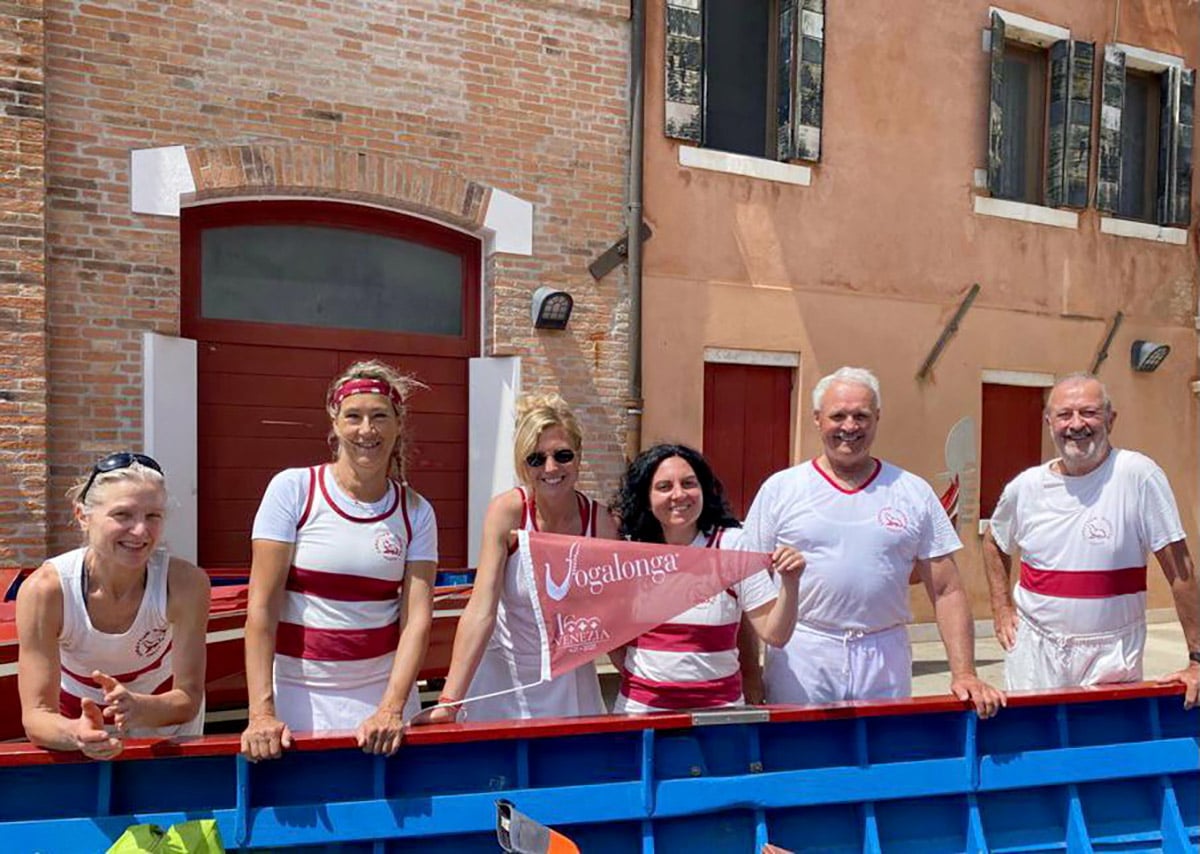
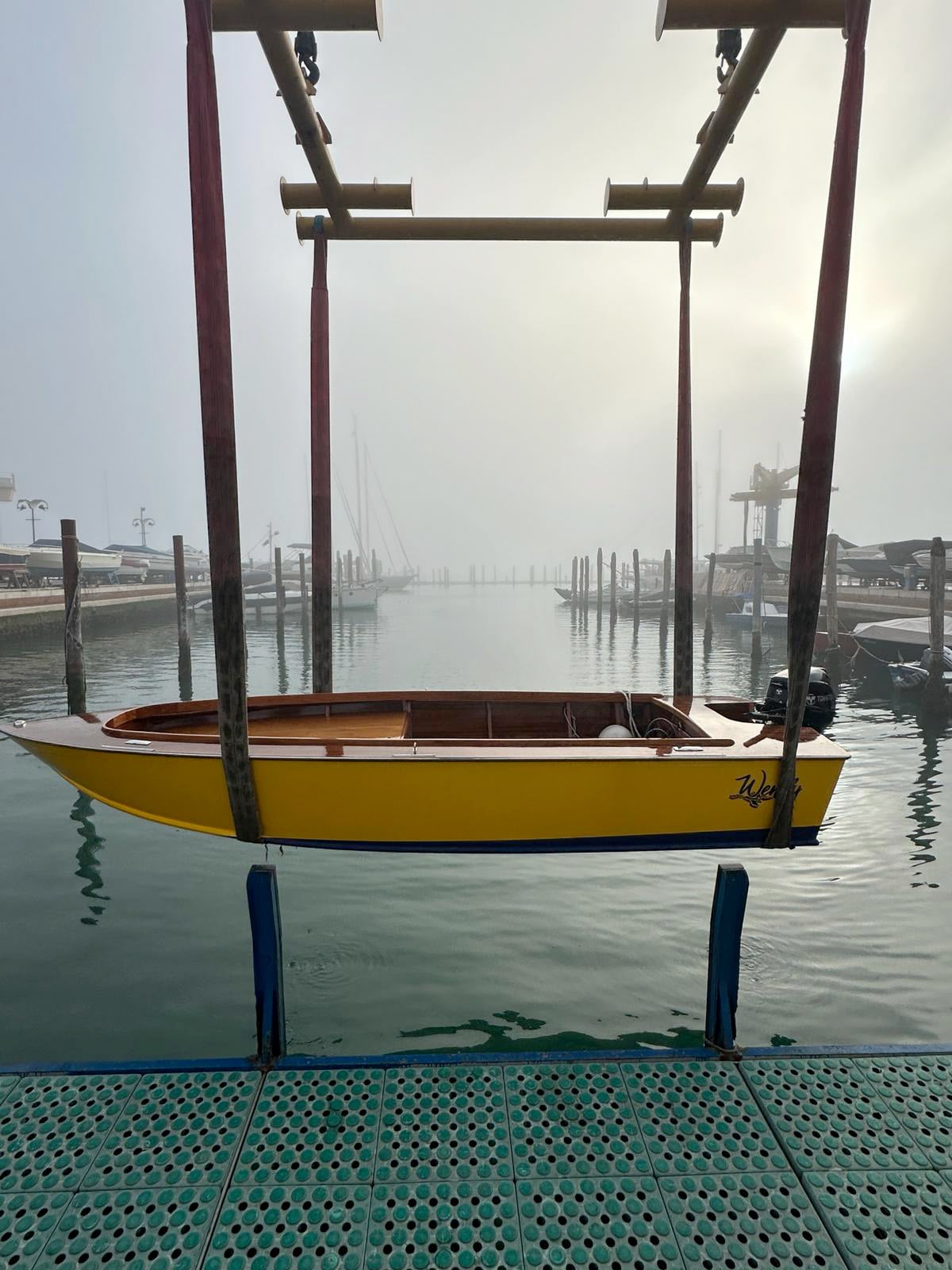
VN: Did you already know how to drive a barchino by the time Wendy was ready?
LM: I’m still learning! I’ve been taking lessons and I’m hoping that in a couple of months I’ll be OK. And then the launch, il varo, was such a beautiful moment. All my favourite people were there for this other milestone after the glass sculptures. I had a priest there to bless the boat – because I didn’t want to break a bottle of Champagne on her bow, I tried the Formula One technique, and I ended up spraying champagne in my face and all over the priest. I’m not sure how lucky that’s going to be, but it was funny!
VN: Being a nomadic spirit, have you ever had a moment in which you thought that life in Venice was not for you anymore?
LM: No, although from 2022 to 2023 I had a little stint in Lisbon and then spent 8 months in Africa. People talk about Mal d’Africa but I suffered from Mal di Giudecca, I missed it so much. Coming back from Africa, I truly realised that Venice was home for me. I’ve had the luck to travel a lot, and nowhere else has felt quite like home like the Giudecca. I’ve only ever lived there and feel very much a giudecchina. Giudecca is where I arrived eight years ago, and that’s where I’ve stayed.
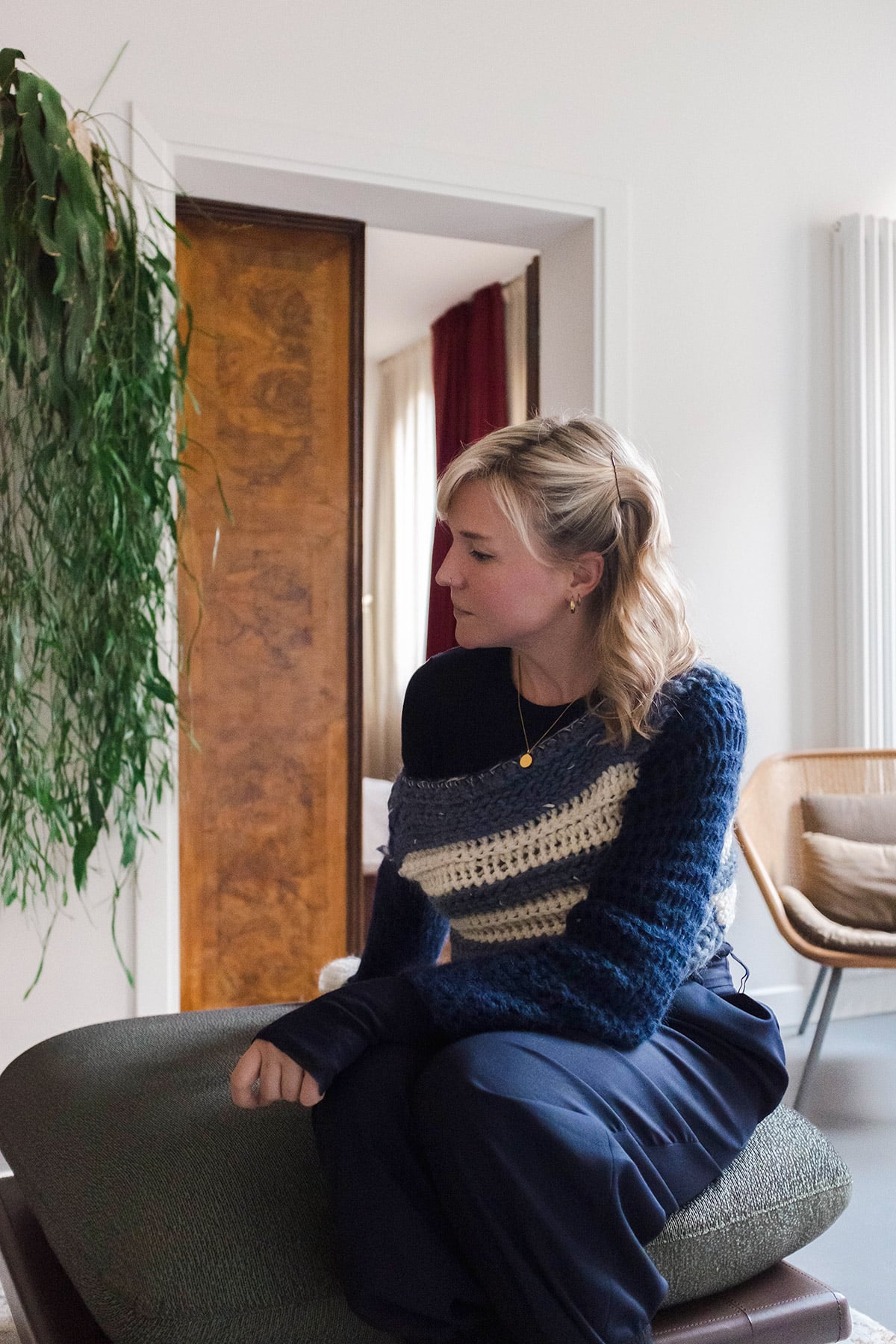
“People talk about Mal d’Africa but I suffered from Mal di Giudecca, I missed it so much! Upon return from Africa, I truly realised that Venice was home for me. I’ve had the luck to travel a lot, and nowhere else has felt quite like home like the Giudecca. I’ve only ever lived there and feel very much a giudecchina. Giudecca is where I arrived nine years ago, and that’s where I’ve stayed ever since.”
VN: Buying a place on la Giudecca was the next step.
LM: I suppose that was me finally putting my anchor down, and it made sense to do it here. The house project is going well, there is still so much work to do, but now that the boat is done, I can focus on it more. I’ve moved temporarily to the Lido whilst they’re doing the work on the house. I really enjoy Lido in the winter. It’s very quiet, I cycle, go on long walks. Even if slightly isolating, there is something regenerating about it.
VN: Do you have any other special places?
LM: Bar Palanca on the Giudecca is really my centre of gravity and it is no coincidence that I bought a house just ten metres away. There is such a friendly and familiar feeling of warmth and community there, and there is no better way to start one’s day than with a coffee served up by the one and only Andrea Barina! Pellestrina is another one of my favourite places. What I have done regularly over the years, before having a boat, is wake up very early, get the vaporetto over to see the fishermen coming in after the night’s work. Pellestrina is also another fascinating liminal space – this thin strip of land with the lagoon on one side and the sea to the other. Then, I love Sant’Erasmo. I have a friend there who cultivates artichokes and I go there whenever I need that meditative practice and to get my hands dirty! I feel most like me when I’m working in and with nature.
And then, well, Vino Vero of course. It’s like a second – tipsy – office.
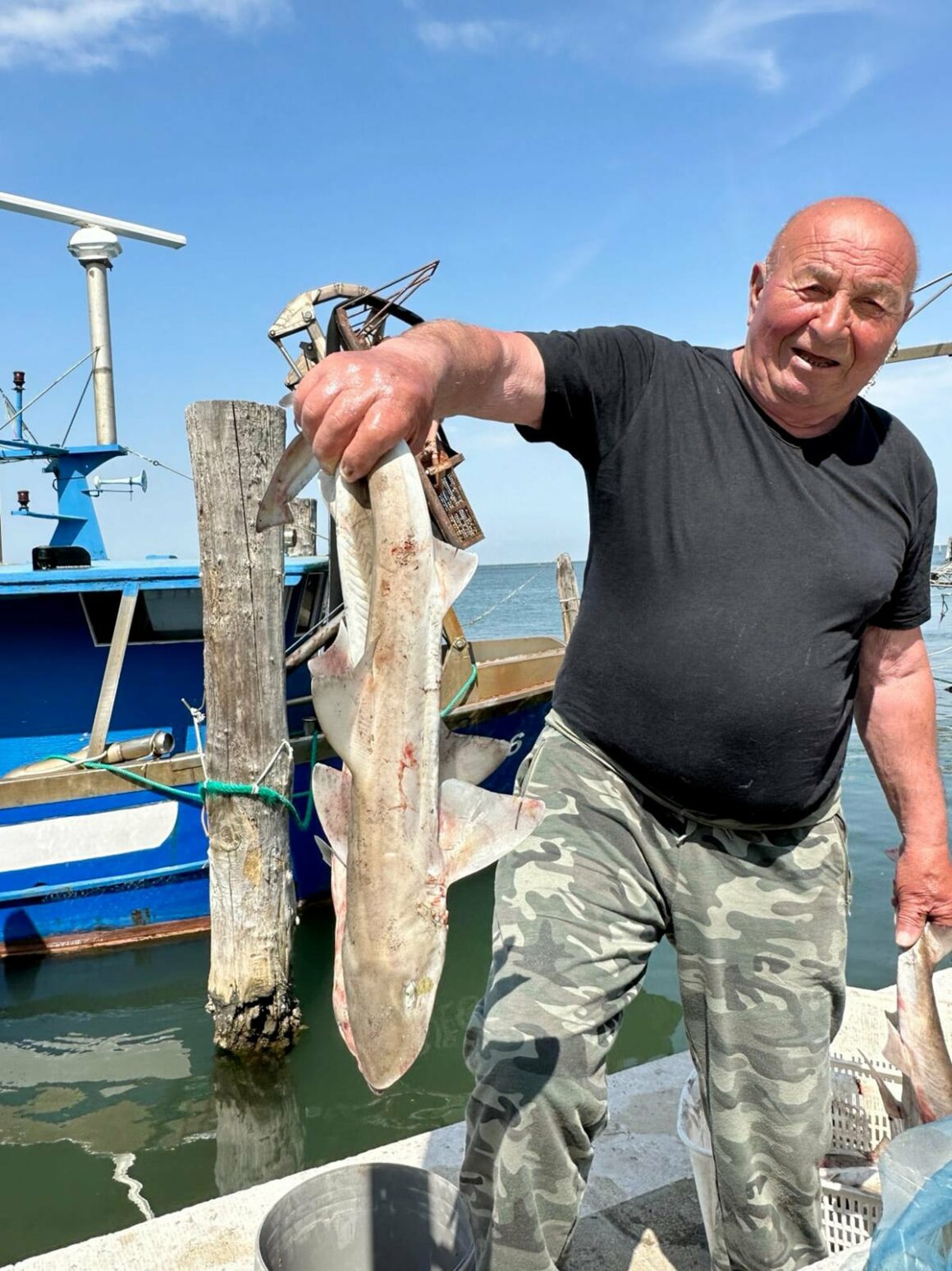
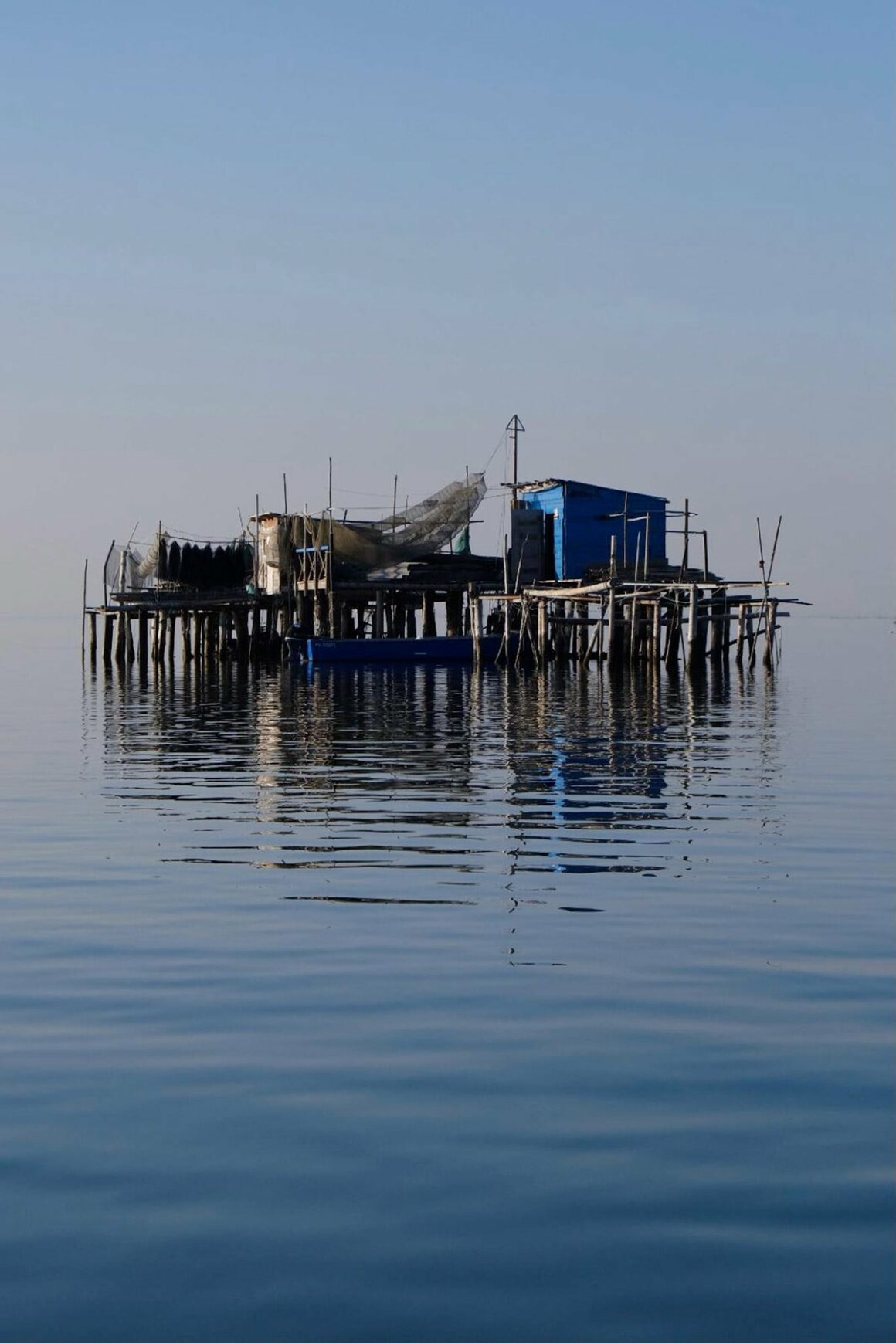

VN: How do you see Venice from an artistic standpoint these days?
LM: There is so much more going on than meets the eye, there are brilliant artists (and friends) living and working here. Sophie Westerlind, Lucia Veronesi, Lorenzo Vitturi, Michele Bubbaco, Lorenzo Mason, Mariateresa Sartori, Giorgio Andreotta Calò – to name but a few. Just last week I went to visit Elisabetta Di Maggio in her studio, which is literally opposite my office, I would never have known. Beautiful studio, incredible work and mind. I’m happy that in some way I can make this all visible through my ‘office’ job. But it’s difficult for many younger artists here too, they struggle to find a space or aren’t able to afford it, sometimes they get kicked out because the space needs to be used for other scopes. So yes, it’s a challenge, and I have this desire to help somehow.
“There’s a quote by Leonard Cohen, of whom I am a huge fan, and of which I live by: If you don’t become the ocean, you’ll be seasick everyday. I feel that way about Venice. You have to adapt and fluctuate with it, in this perpetual state of transition, which is the nature of life, I suppose!”
VN: Venice can be rewarding and tough at once. What are your coping mechanisms?
LM: There’s a quote by Leonard Cohen, of whom I am a huge fan, and of which I live by: If you don’t become the ocean, you’ll be seasick everyday. I feel that way about Venice. You have to adapt and fluctuate with it, in this perpetual state of transition, which is the nature of life, I suppose!.








